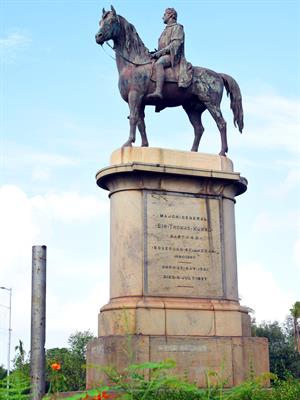
PUMPA - SMART LEARNING
எங்கள் ஆசிரியர்களுடன் 1-ஆன்-1 ஆலோசனை நேரத்தைப் பெறுங்கள். டாப்பர் ஆவதற்கு நாங்கள் பயிற்சி அளிப்போம்
Book Free DemoIn the British territories in Madras, there was a similar move to change the revenue policy, which was away from the concept of Permanent Settlement. The new system that was devised came to be known as the Ryotwari system.
In 1820, the system was proposed on a small scale by Captain Alexander Read in some areas of the south. Finally developed by Thomas Munro, this system was gradually extended all over south India.

Thomas Munro Statue, Chennai, Tamilnadu.
Salient Features
- The settlement was made directly with the cultivators (ryots).
- Ryots were considered as the tillers of the land for generations.
- Their fields were thoroughly surveyed before the revenue estimate was announced.
- The British acted as a protective father protecting the ryots under their charge.
- The demand was fixed at 45\ to\ 55\ percent of the produce by the Government.
Demerits of the system
- Within a few years, driven by the desire to increase the income from land, revenue officials fixed the demand too high.
- Ryots were incapable of paying, cultivators left the countryside, and villages became deserted in many regions.
Optimistic officials had imagined that the new systems would transform the peasants into wealthy farmers. But this did not happen. Thus, under this system, the government exploited the farmers instead of zamindars.